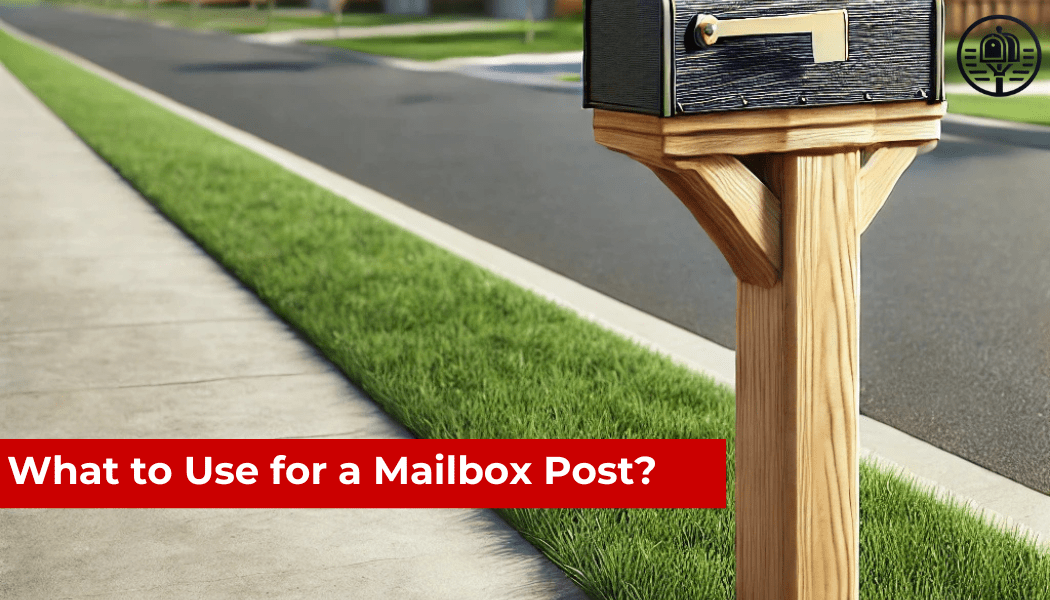A mailbox post is a crucial part of any residential or commercial property, serving as a secure and stable support for mail delivery. Choosing the right material and design for a mailbox post can impact its durability, aesthetic appeal, and compliance with postal regulations. In this guide, we’ll explore the best materials for mailbox posts, factors to consider before installation, and how to ensure longevity.
Best Materials for a Mailbox Post
Selecting the right material for a mailbox post depends on factors such as climate, durability, maintenance requirements, and design preferences. Here are the most common materials used for mailbox posts:
1. Wood Mailbox Posts
Wood is a traditional and aesthetically pleasing choice for mailbox posts. It blends well with natural surroundings and offers customization options such as painting and staining. If you're interested in a wooden mailbox post, have a look at our Wooden Mailbox Post !
Pros:
- Classic and attractive appearance
- Easy to customize with paint or engravings
- Readily available and relatively affordable
Cons:
- Prone to rotting, warping, and insect damage
- Requires regular maintenance, such as sealing or painting
- May not withstand extreme weather conditions over time
2. Metal Mailbox Posts
Metal posts, including aluminum, steel, and wrought iron, are known for their strength and longevity.
Pros:
- Highly durable and resistant to weather conditions
- Minimal maintenance required
- Can support heavy-duty mailboxes
Cons:
- Susceptible to rust if not properly coated
- More challenging to install compared to wood
- Some metals can be expensive
3. PVC or Vinyl Mailbox Posts
Vinyl mailbox posts are popular due to their lightweight and weather-resistant properties.
Pros:
- Resistant to rot, insects, and rust
- Requires little maintenance
- Available in various colors and styles
Cons:
- Less sturdy than metal or wood
- Can become brittle in extreme cold weather
- Limited weight capacity for larger mailboxes
4. Concrete Mailbox Posts
Concrete is one of the most durable materials for a mailbox post, commonly used for security and longevity.
Pros:
- Extremely sturdy and weather-resistant
- Low maintenance
- Difficult to vandalize or damage
Cons:
- Heavy and challenging to install
- Not easily customizable
- Permanent, making relocation difficult
5. Composite Mailbox Posts
Composite materials, often made from a blend of recycled plastic and wood fibers, offer an eco-friendly and durable alternative.
Pros:
- Resistant to weather, insects, and rot
- Requires minimal maintenance
- Sustainable and environmentally friendly
Cons:
- Can be expensive compared to traditional materials
- Limited availability in certain styles
Factors to Consider When Choosing a Mailbox Post
1. Local Regulations and USPS Guidelines
Before installing a mailbox post, check local ordinances and USPS regulations. The post should be positioned 6 to 8 inches from the curb, with the mailbox height between 41 and 45 inches from the ground.
2. Durability and Climate Resistance
Consider the climate in your area. Wood may deteriorate in wet climates, while metal may rust in coastal areas. Vinyl and composite materials offer excellent weather resistance.
3. Installation Requirements
Some materials require more complex installation methods. Concrete and metal posts may need deep anchoring, while vinyl and wood posts can be easier to install.
4. Aesthetic Appeal
The mailbox post should complement your home’s exterior. Whether you prefer a modern metal post or a rustic wooden design, choose a material that enhances your property’s curb appeal.
5. Maintenance Needs
Wood requires regular staining or sealing, while metal needs rust prevention treatments. Vinyl and composite posts are the easiest to maintain.
How to Install a Mailbox Post
Step 1: Gather Materials
You’ll need:
- A post hole digger
- Concrete mix (for added stability)
- Level and measuring tape
- Screws or fasteners
Step 2: Dig the Hole
Dig a hole at least 24 inches deep for stability. Ensure it follows USPS height recommendations.
Step 3: Insert the Post and Secure It
Place the post in the hole, ensuring it is straight using a level. Fill the hole with concrete or compacted soil for support.
Step 4: Attach the Mailbox
Once the post is secure, mount the mailbox according to the manufacturer’s instructions.
Step 5: Maintain the Post
Check for signs of wear, rust, or rot annually and perform necessary repairs.
Frequently Asked Questions (FAQ)
1. What is the best material for a mailbox post?
The best material depends on durability, maintenance, and aesthetic preference. Metal and composite materials offer longevity, while wood provides a classic appearance.
2. How deep should a mailbox post be buried?
For stability, the post should be buried at least 24 inches deep. In areas with harsh weather conditions, deeper installation may be required.
3. Can I use concrete to secure my mailbox post?
Yes, concrete is an excellent option for securing a mailbox post, especially in windy or high-traffic areas.
4. How do I prevent a wooden mailbox post from rotting?
Use treated wood, apply a waterproof sealant, and ensure proper drainage at the base to prevent water accumulation.
5. What should I do if my mailbox post is leaning?
Check the foundation and reinforce it with additional soil or concrete. If the post is damaged, replacing it may be necessary.

